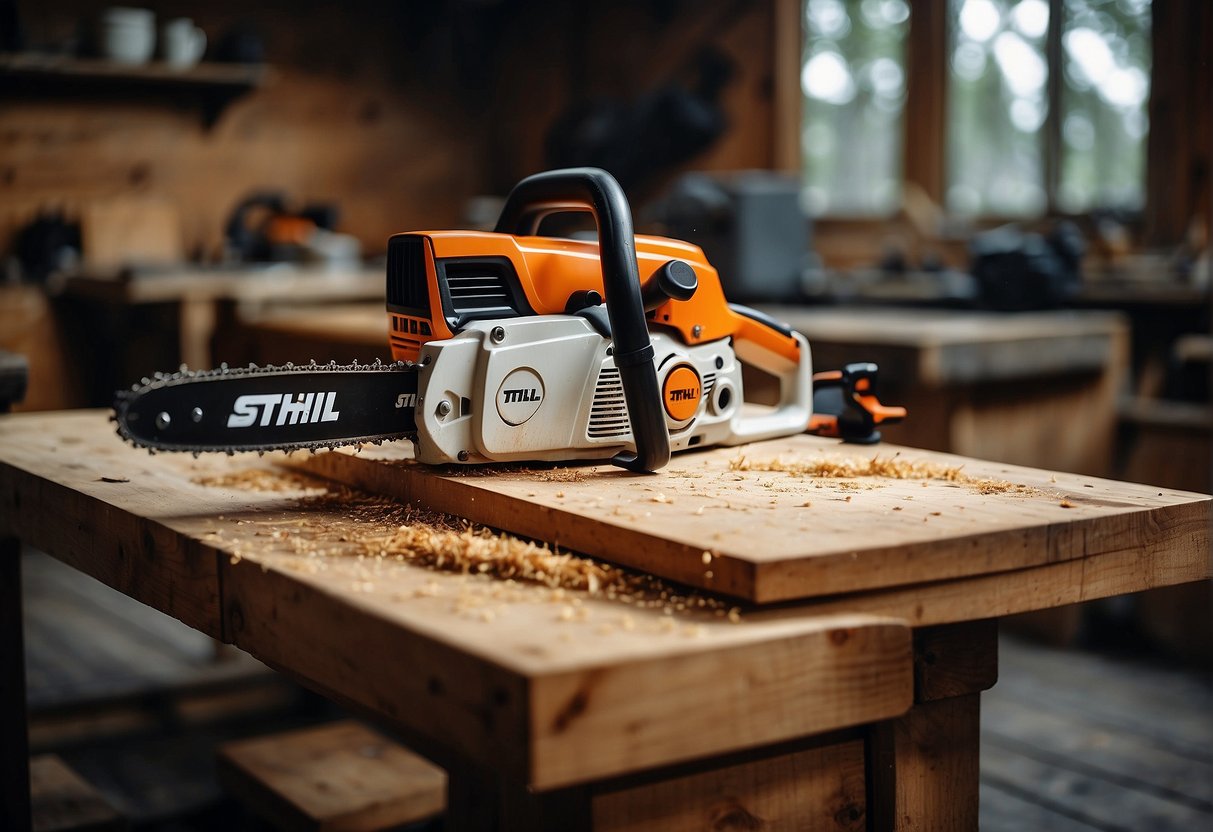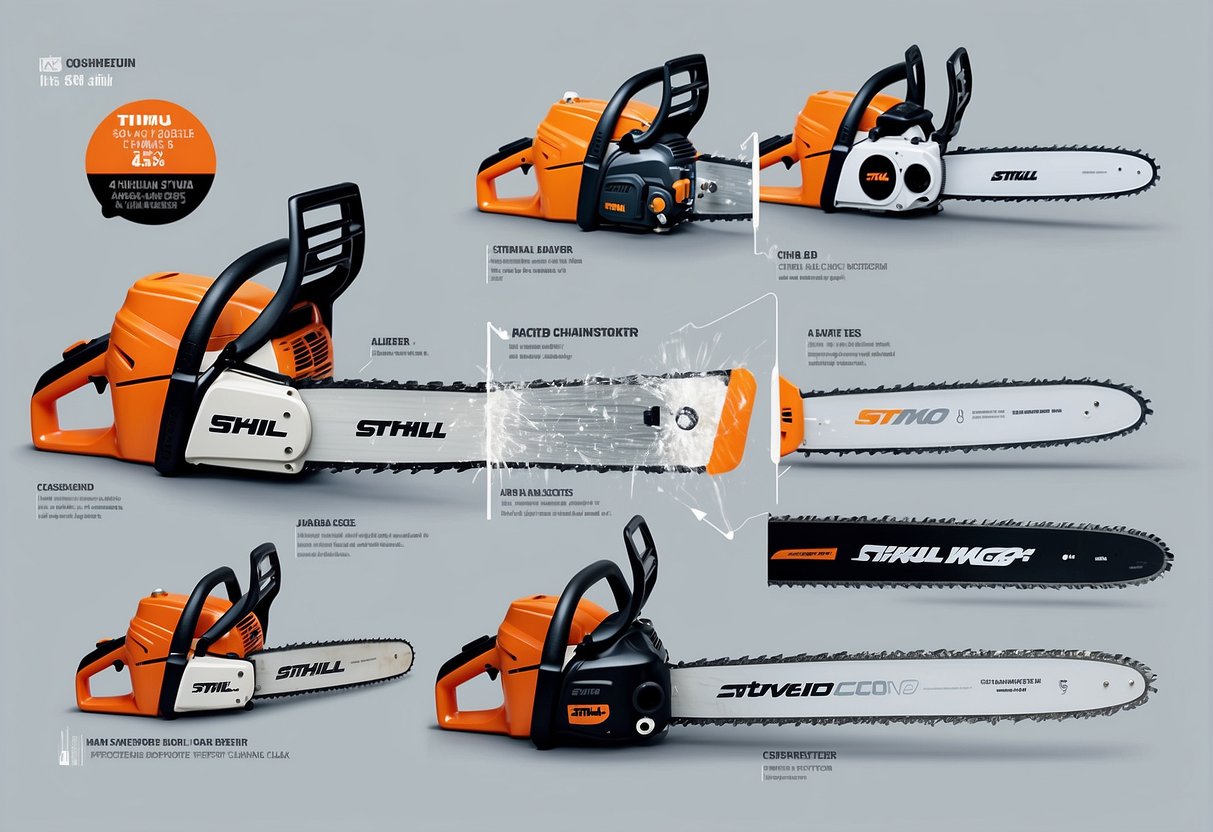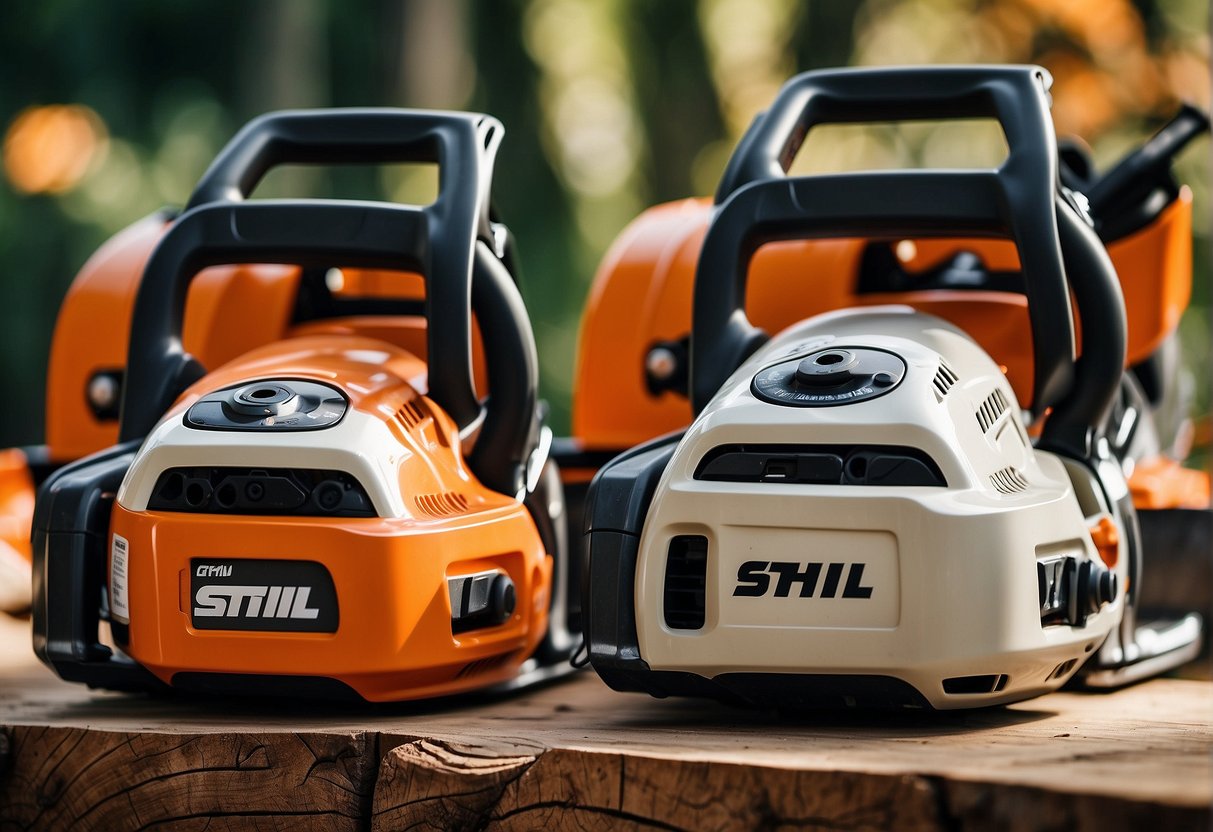I have been using Stihl chainsaws for years and have always been impressed by their quality and performance. Recently, I have been considering upgrading to either the Stihl 660 or 661 chainsaw and wanted to do some research to help me make the best decision. After looking into both models, I have found some key differences that could impact my choice.
The Stihl 660 and 661 chainsaws are both popular models among professionals and homeowners alike. While they share many similarities, there are some notable differences that could make one model a better fit for certain users. In this article, I will provide an overview of both chainsaws, compare their technical specifications, discuss user experience and handling, explore maintenance and durability considerations, and evaluate price and value. By the end of this article, you should have a better understanding of which chainsaw is the right choice for you.
Key Takeaways
- The Stihl 661 offers enhanced performance, improved features, and updated technology compared to the Stihl 660.
- Technical specifications such as engine power, weight, and fuel tank capacity are important factors to consider when choosing between these chainsaws.
- The price and value of each chainsaw should be evaluated based on individual needs and preferences.
Overview of Stihl 660 and 661 Chainsaws
As a professional chainsaw manufacturer, Stihl has been producing quality chainsaws for decades. The Stihl 660 and 661 chainsaws are two of the most popular models on the market. In this section, I will provide an overview of the features of both chainsaws.
Stihl 660 Features
The Stihl 660 chainsaw is a powerful tool that boasts a 7.1 bhp engine. It has a fuel tank capacity of 27.9 ounces and a weight of 15.9 pounds. Some of the notable features of the Stihl 660 chainsaw include:
- Decompression valve for easy starting
- Adjustable oil pump for chain lubrication
- Side-access chain tensioner for easy chain adjustment
- ElastoStart handle for reduced vibration and improved grip
Stihl 661 Features
The Stihl 661 chainsaw is an upgraded version of the Stihl 660 with a slightly larger 7.2 bhp engine. It has a fuel tank capacity of 28.6 ounces and a weight of 16.8 pounds. Some of the notable features of the Stihl 661 chainsaw include:
- Decompression valve for easy starting
- Adjustable oil pump for chain lubrication
- Side-access chain tensioner for easy chain adjustment
- ElastoStart handle for reduced vibration and improved grip
- HD2 air filter for improved filtration and longer service life
Both chainsaws are designed for professional use and are capable of cross-cutting through all species of hardwood. They also feature a wrap-handle for improved grip and maneuverability. The Stihl 661 chainsaw has a slightly upgraded power output at 7.2 HP compared to the 7.0 HP of the Stihl 660, but the difference in power is negligible on paper and on the field.
In conclusion, both the Stihl 660 and 661 chainsaws are powerful and reliable tools that are designed for professional use. They share many of the same features and are capable of cross-cutting through all species of hardwood. The Stihl 661 has a slightly larger engine and an improved air filter, but the Stihl 660 is still a great option for those looking for a powerful and reliable chainsaw.
Technical Specifications Comparison
Power and Performance
When it comes to power and performance, the Stihl 660 and 661 chainsaws are both highly capable machines. The Stihl 660 features a 7.1 bhp engine, while the Stihl 661 boasts a slightly larger 7.2 bhp engine. While the engine size difference is minimal, it can have an impact on the overall performance and torque output.
Both chainsaws have a maximum RPM of 13,500, which is impressive and allows for efficient cutting. The Stihl 660 has a maximum cutting speed of 50 meters per second, while the Stihl 661 can cut at a maximum speed of 52 meters per second. This means that the Stihl 661 has a slight edge when it comes to cutting speed.
Physical Attributes
The Stihl 660 and 661 chainsaws have similar physical attributes. Both chainsaws have a bar length of 25 inches, which is ideal for heavy-duty cutting tasks. The Stihl 660 weighs in at 16.3 pounds, while the Stihl 661 weighs in at 16.5 pounds. This means that the Stihl 661 is slightly heavier than the Stihl 660, but the difference in weight is negligible.
Both chainsaws have a cylinder displacement of 91.6 cc, which is impressive and allows for efficient and powerful cutting. The Stihl 660 has a power output of 5.2 kW, while the Stihl 661 has a power output of 5.4 kW. This means that the Stihl 661 has a slight edge when it comes to power output.
In summary, the Stihl 660 and 661 chainsaws are both highly capable machines with impressive power and performance. While the Stihl 661 has a slight edge in cutting speed and power output, the differences between the two chainsaws are minimal.
User Experience and Handling
When it comes to user experience and handling, the Stihl 660 and 661 are very similar. Both chainsaws have an anti-vibration system that helps reduce the amount of vibration felt by the user. This is important because excessive vibration can cause fatigue and discomfort, making it difficult to use the tool for extended periods.
Vibration and Comfort
The Stihl 661 features a shock absorber system that helps further reduce vibration and improve comfort. This system works by isolating the engine from the handles, reducing the amount of vibration that is transmitted to the user’s hands. However, the Stihl 660 still provides a comfortable experience, and the difference between the two models is not significant.
Ease of Use
Both the Stihl 660 and 661 feature a decompression valve that makes starting the chainsaw easier. This valve reduces the amount of pressure in the cylinder, making it easier to pull the starter cord. Additionally, both models feature an ElastoStart handle that reduces the amount of force needed to start the chainsaw.
Overall, the user experience and handling of the Stihl 660 and 661 are very similar. While the Stihl 661 features a shock absorber system that provides a slightly more comfortable experience, the difference is not significant. Both models are easy to use, thanks to the decompression valve and ElastoStart handle.
Maintenance and Durability
When it comes to maintenance and durability, the Stihl 660 and 661 chainsaws are built to last. Both chainsaws are made with high-quality materials that can withstand heavy use and abuse.
Air Filtration System
One of the most important aspects of maintaining a chainsaw is keeping the air filtration system clean and functioning properly. The Stihl 660 and 661 chainsaws are equipped with the HD2 air filter, which is designed to provide superior filtration and longer service life. This filter is easy to remove and clean, which makes maintenance a breeze.
Fuel Efficiency and Consumption
Another important factor to consider when comparing the Stihl 660 and 661 chainsaws is fuel efficiency and consumption. The Stihl 661 is known for its improved fuel efficiency compared to the Stihl 660. This means that you will be able to use the chainsaw for longer periods of time without having to stop and refuel. Additionally, the Stihl 661 has a larger fuel tank capacity than the Stihl 660, which means you can go longer between refueling stops.
In terms of durability, both chainsaws are built to last for many years with proper maintenance. However, some users have reported issues with the Stihl 660’s reliability and durability over time. This is likely due to the fact that the Stihl 661 is an improvement over the Stihl 660, with updated technology and features that make it a more reliable and durable option.
Overall, when it comes to maintenance and durability, the Stihl 661 is the better choice. Its improved air filtration system and fuel efficiency make it a more reliable and long-lasting option compared to the Stihl 660.
Price and Value Considerations
When it comes to purchasing a chainsaw, price is a major consideration. Both the Stihl 660 and 661 are professional-grade chainsaws, and as such, they come with a higher price tag than many consumer-grade models. However, it is important to consider the value that each chainsaw offers.
Initial Investment
The Stihl 660 has been on the market for several years, and as such, it can be found at a lower price point than the newer Stihl 661. However, it is important to note that the Stihl 661 has several improvements over the Stihl 660, including a larger fuel tank and an adjustable automatic oiler. These improvements may justify the higher initial investment for some users.
Long-term Value
When considering the long-term value of a chainsaw, it is important to look beyond the initial investment. The Stihl 661 has a larger fuel tank than the Stihl 660, which means that it can run longer without needing a refill. This can save time and increase productivity in the long run. Additionally, the adjustable automatic oiler on the Stihl 661 allows for more precise oil delivery, which can help extend the life of the chainsaw.
Overall, while the Stihl 661 may be more expensive initially, it offers several improvements over the Stihl 660 that may make it a better value in the long run. However, it is important to consider individual needs and preferences when making a purchasing decision.
Frequently Asked Questions
What are the primary differences in specifications between the Stihl MS 660 and MS 661 models?
The Stihl MS 660 and MS 661 are both powerful chainsaws, but they differ slightly in their specifications. The MS 661 has a higher horsepower and lower weight than the MS 660, making it the preferable choice for heavy-duty tasks like felling large trees and milling lumber. The MS 661 also has a slightly larger fuel tank capacity than the MS 660. However, the MS 660 has a higher engine displacement and can accommodate a longer bar length.
How does the weight compare between the Stihl MS 660 and MS 661 chainsaws?
The Stihl MS 661 is lighter than the MS 660, which makes it easier to maneuver and more comfortable to use for extended periods. The MS 661 weighs 14.8 pounds without the bar and chain, while the MS 660 weighs 15.9 pounds without the bar and chain.
What common issues are reported by users of the Stihl MS 661?
Some users have reported issues with the chain brake on the Stihl MS 661, which can become stuck or difficult to engage. Other users have reported problems with the decompression valve, which can become clogged or fail to function properly. However, these issues are relatively uncommon and can usually be resolved with routine maintenance.
What is the maximum bar length that can be used with the Stihl MS 660?
The Stihl MS 660 can accommodate a bar length of up to 36 inches, which makes it suitable for a wide range of applications. However, it is important to note that using a longer bar length can put additional strain on the chainsaw and may require more frequent maintenance.
What is the engine displacement of the Stihl MS 660 chainsaw?
The Stihl MS 660 has an engine displacement of 91.1 cc, which produces a powerful output of 7.2 bhp. This makes it well-suited for heavy-duty tasks like felling large trees and cutting thick logs.
How much horsepower does the Stihl MS 661 produce?
The Stihl MS 661 produces 7.1 bhp, which is slightly less than the MS 660. However, it is still a powerful chainsaw that is capable of handling demanding tasks like felling large trees and cutting thick logs.

Hi, I’m Sal Muller of Tooltrip.com. My DIY experience led me to understand essential power tools for home projects. Tooltrip.com guides enthusiasts and professionals in choosing right tools for any job. I provide concise top tool reviews for easier, efficient DIY.




